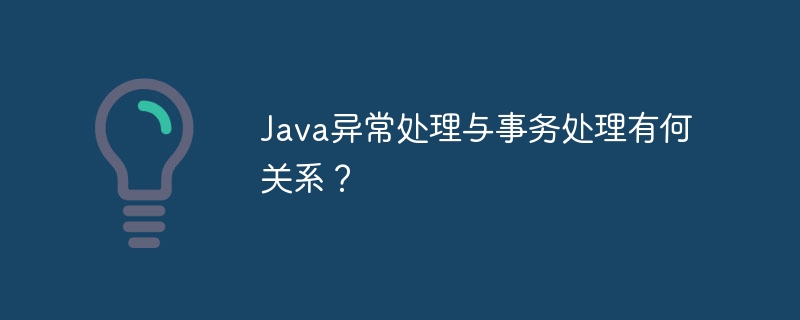
Exception handling is used to handle application errors, while transaction processing ensures that the operation as a whole succeeds or fails. When an exception is thrown within a transaction, the transaction is automatically rolled back. Therefore, it is crucial to have exception handling in transactional operations to maintain data integrity, e.g. catching exceptions and rolling back or committing the transaction depending on the error type.

The relationship between Java exception handling and transaction processing
Exception handling and transaction processing are two closely related but Completely different concepts. Understanding the relationship between them is critical to writing reliable and robust code.
Exception handling
Exception handling is used to handle unexpected events or errors that occur during application execution. When an exception is thrown, the Java program stops execution and goes to the exception handler to handle the exception condition. Exception handlers can catch exceptions, log error information, and take appropriate action (for example, notify the user or attempt to recover from the error).
Transaction processing
Transaction processing is used to ensure that a series of operations as a whole either all succeed or all fail. It involves the following four characteristics:
The relationship between exception handling and transaction processing
When an exception is thrown in a transaction, the transaction will automatically roll back, which means that all All database operations will be undone. This is because transactions must remain atomic and if an error occurs during execution, the entire transaction will fail.
Therefore, exception handling in transactional operations is very important. If the exception is caught and handled, the developer can properly rollback or commit the transaction depending on the error type. This ensures that the application maintains data consistency and integrity in the event of errors.
Practical Case
The following is a Java practical case that combines exception handling and transaction processing:
try {
// 开始事务
session.beginTransaction();
// 执行数据库操作
session.save(entity);
// 提交事务
session.getTransaction().commit();
} catch (Exception e) {
// 捕获异常
session.getTransaction().rollback();
// 处理异常并记录错误信息
}In this example, try-catch blocks are used to handle exceptions that may occur during database operations. If an exception occurs, the transaction is rolled back to ensure data integrity.
Understanding the relationship between exception handling and transaction processing is critical to writing reliable Java applications. By properly handling exceptions within transactions, developers can ensure data consistency and application robustness.
The above is the detailed content of How does Java exception handling relate to transaction processing?. For more information, please follow other related articles on the PHP Chinese website!




